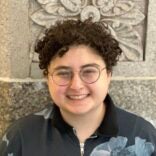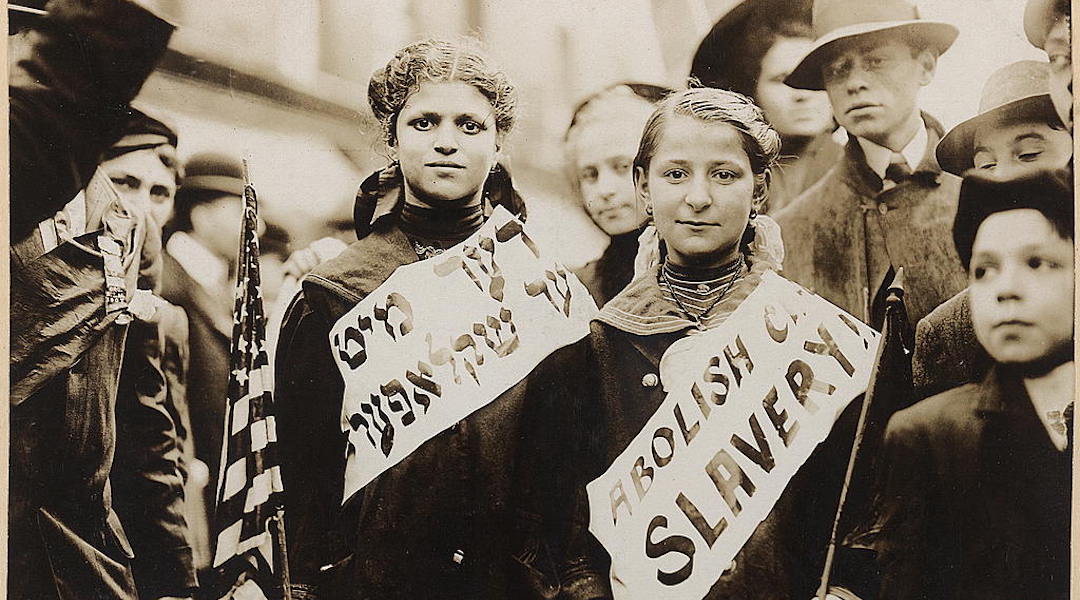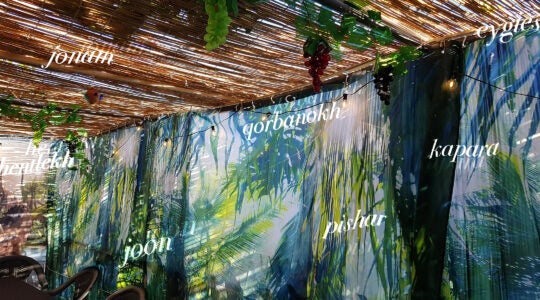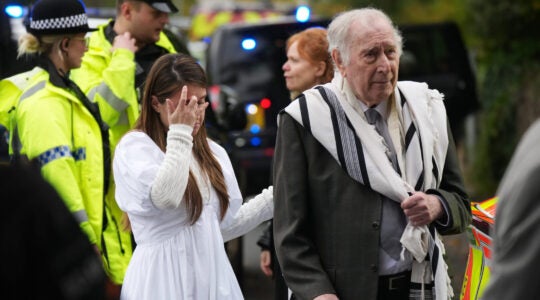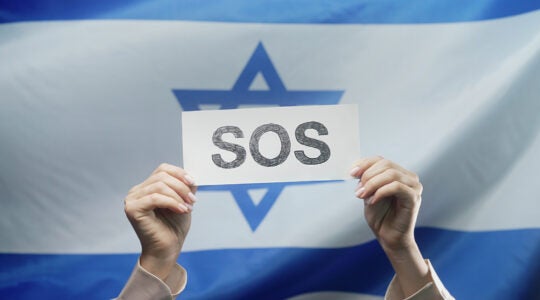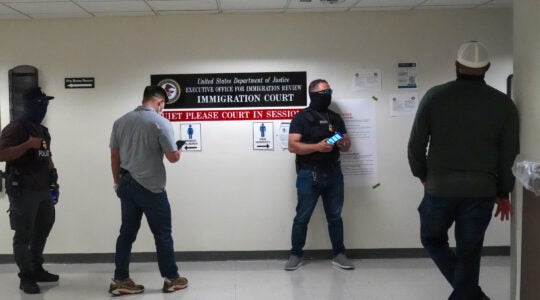(JTA) — Queer elders can be hard to find. There’s no app I could mindlessly swipe to find a queer mentor. So, for wisdom and guidance on how to live as a queer human, I’ve had to look elsewhere.
I was nicknamed “Bubbe” (the Yiddish word for grandmother) in high school, due to my early bedtime and exceptional affection for sweaters, puzzles and tea. But in college, when I came out as nonbinary, Bubbe no longer seemed to fit: My gender sits somewhere on the spectrum between “bright floral button-downs” and “Bernie Sanders.” Friends soon coined me “theydy,” a gender-neutral play on zeide, the Yiddish word for grandfather.
While my affection for puzzles and sensible footwear are certainly theydy–esque, they are not truly the reason that I am fond of this nickname. I love being called a theydy because Yiddish culture has taught me the value of being a little strange, a little out of place and more than a little queer.
Yiddish, the 1,000-year-old language of Central and Eastern European Jews, never quite fit into a culture of American assimilation. At the turn of the 20th century, in a country where most people spoke English, Yiddish was the language to be forgotten (or at least used only when you didn’t want your Americanized kids to know what you were saying). And in the middle of the 20th century, in Israel, where most people spoke Modern Hebrew, Yiddish was never quite considered “good enough,” “academic enough” or even “Jewish enough.”
But before the Holocaust decimated the Jews of Eastern Europe, Yiddish established itself as the language of poets, artists and writers. Queer and gender-bending sensations like Isaac Bashevis Singer’s short story and play “Yentl the Yeshiva Boy” and Sholem Asch’s play “God of Vengeance” were written in Yiddish, and S. An-ski’s drama “The Dybbuk,“ in which a son’s spirit possesses the body of the woman he loves, was popularized in Yiddish.
Yiddish was also the language and culture of bold and fiery activists — people like Rose Schneiderman and Clara Lemlich — who were powerhouses of the early American labor movement.
As queerness is increasingly persecuted in the United States, Yiddish culture has been my refuge: a culture with no country that is well-suited for people being rejected by theirs. Just as queer people build communities out of necessity, grounded in a deep sense of love and care, I have found Yiddish culture to be heimish and warm, welcoming those with and without an ancestral connection to the language.
Today, inspired by the Yiddishists of the past and the present, many queer people of my generation have taken on Yiddish learning and leaned into Yiddish culture. From the Queer Yiddishkayt Facebook group, to the queer klezmer band Isle of Klezbos, to the virtual Queer Yiddish Camp, many queer people are drawn to Yiddish language and culture. Perhaps this is because queer people often especially understand the importance of being counter-cultural. Native Yiddish speakers are few and far between outside of the haredi Orthodox communities of Jerusalem and Brooklyn, and so for queer Yiddishists, the benefits of learning the language are rarely material. Rather, they are political, spiritual, sentimental and communal. In a society that tells us that our value comes from our productivity, learning Yiddish is itself an act of resistance.
My queer Yiddish is deeply intertwined with the fight for a better and more beautiful world for all, “a shenere un besere velt far ale.” I’m the social justice organizer at The Workers Circle, a Jewish social justice organization where we embrace our Yiddish tradition through vibrant cultural expression, Yiddish language learning and bold activism. I’ve been arrested with the Workers Circle three times for nonviolent civil disobedience, fighting for federal voting rights and democracy reform legislation. Each time, as I felt nerves coming on, and my hands began to sweat, I could hear my queer elder — Yiddish culture — whisper in my ear. I was reminded that I am not the first person to take a stand for what I believe in. I come from a long legacy of people trying to do the same.
Through its defiant perseverance throughout history, Yiddish culture has shown me what resilience really looks like. And through its humor, food and music, I have learned from Yiddish culture how to lean into the joy of being. Yiddish culture is my queer elder. I am proud to be a theydy.
JTA has documented Jewish history in real-time for over a century. Keep our journalism strong by joining us in supporting independent, award-winning reporting.
